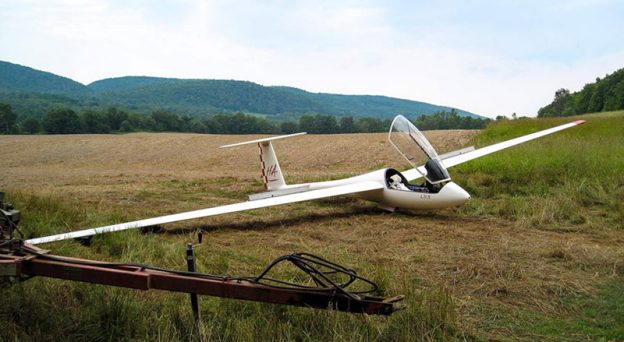
Thermals, those invisible columns of rising warm air, are a glider pilot’s best friend. These natural updrafts allow pilots to soar effortlessly through the skies, conserving energy, and extending flight time, and distances covered. While thermals are commonly associated with high altitudes, where they can carry us to great heights, they also exist at low altitudes, naturally, where they first begin their life! In this article, we’ll explore the art of finding thermals at low altitude and the basic techniques we can use to stay afloat.
Understanding thermals
Thermals are essentially columns of warm air that rise due to temperature differences between the ground and the surrounding air. As the sun heats the earth’s surface, it warms the air above it, causing it to rise. The rising air creates an updraft, which of course is what a glider pilot takes advantage of to stay airborne.
Low-altitude thermals
While thermals are definitely easier to find at higher altitudes and are more commonly stronger, they do occur at the lower levels too. They are typically weaker and smaller, less organised than their high-altitude counterparts, making them a bit trickier to find, work and exploit. However, with the right knowledge and skills, we can still find these thermals which will again take us to great heights.
- Local geography: Knowledge of the local geography is essential for identifying potential thermal triggers. Features like darker soiled ploughed fields, dry creek beds, subtle changes in the elevation of the ground with the sun’s energy facing onto a windward face, an asphalt road with traffic along it, etc. The simplest way is to imagine yourself walking on the surface with bare feet, wherever you would find it the hottest and most uncomfortable, is usually the best place to go and try.
- Wind patterns: Keep a keen eye on the wind direction and its impact on thermal movement. Wind blowing into the sunny side of a slope can create lift while waiting for a thermal to come up the face. Often hot air will pool against a tree line surrounding a paddock, the wind will then trigger the thermal overhead or just downwind of this tree line, this is just one example.
- Birds and wildlife: Nature often provides clues about thermals. When you are low, it’s so important to look up, look out, look down. Don’t tense up and focus solely on the instruments, watch for birds circling or just taking off out of a tree, they sure are experts at low-altitude thermals!
- Thermal sniffing: While in flight, continuously scan the terrain below and be prepared to go over many trigger sources, always have a plan B, C, or even D in mind before you absolutely have to commit to landing in a field.
- Be patient: Finding thermals at low altitude requires patience and practice. Patience may be circling over a hot field with a farmer ploughing, in zero sink, just waiting for the thermal to trigger and form.
Safety First
When soaring at low altitude, remember it’s always essential to prioritise safety first. Always have a plan for landing in a field, remember it’s only a game, so if you’re in a difficult situation, it’s far more important to stop looking for lift early and focus on a good safe off-field landing. When flying at low altitude, you will also need the appropriate training and a deep understanding of your own abilities, and your sailplanes.


